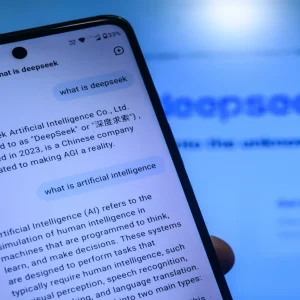
In a not very distant future, nearly everything consumers, governments and businesses do or buy will be an IoT product or service.
By 2020, there will be 34 billion devices connected to the internet, up from 10 billion in 2015, according to BI Intelligence. Nearly $6 trillion will also be spent on IoT over the next five years.
CBR looks into the future of ten different sectors in an IoT world.
1. Manufacturing
In three years from now, 53% of manufacturers worldwide are expected to have implemented smart sensors into their operations. According to PwC, 35% of manufacturers already use smart sensors, 10% plan to implement them within a year, and 8% plan to implement them by 2018.
Another report from IDC predicts that by 2020, at least 50% of all corporate stand processes in manufacturing will have automated data acquisition (DAQ) systems, while a quarter will have self-correction capabilities.
2. Transportation
The IoT market in intelligent transportation systems is expected to reach $143.93 billion by 2020 at an estimated CAGR of 8.95% from 2014 to 2020, according to Markets & Markets.
Looking at smart cars, BI Intelligence predicts that there will be over 220 million connected cars on the road by 2020. In a report, ABI research unveiled that North America and Europe are set to lead in the number of registered IoT vehicles at least until 2030.
3. Defence
Spending on military drones will reach $8.7 billion in 2020 with 126,000 military robots being shipped by then, according to Frost & Sullivan.
Using IoT in defence strategies will create a new type of smart army. Real-time virtualisation and connectivity agents allied with safe and secure OSs will transform the force, according to Wind River, which also predicts machine generated data in this sector to grow 15 times by 2020, as 85% of devices are not yet connected.
The company has also raised the need for the creation of a ‘combat cloud’ where the internet of military things (IoMT) would store data in a safer cloud infrastructure, opening new business opportunities to cloud providers
4. Food
With the world population on the rise, IoT will help to keep food production levels at good pace. BI Intelligence estimates 75 million IoT device installations for agricultural uses by 2020, at a 20% CAGR.
These devices are primary sensors placed in soil to track acidity levels, temperature, and variables that help farmers increase crop fields.
The firm also predicts 310 million IoT devices will be used by food services companies by 2020. The majority of these devices will be digital signs connected throughout grocery stores and fast-food companies.
5. Smart cities
Municipalities worldwide will increase their spending on IoT systems at a 30% CAGR, from $36 billion in 2014 to $133 billion in 2019, also according to BI Intelligence.
The firm said that this investment will generate $421 billion in economic value for cities worldwide.
A Gartner report predicts that the number of connected things being used in smart cities will increase from 1.1 billion this year to 9.7 billion in five years.
6. Connected Home
By 2030, BI Intelligence forecasts that the majority of home devices shipped will be connected to the internet due to initiatives from device makers to connect everything they produce.
From the many different smart home applications available, smart meters are already a reality, and from the 313 million installed in homes worldwide in 2013, Navigate Research predicts that number to jump to 1.1 billion by 2022.
As for lighting, wireless LED light bulbs will be one of the fastest growing IoT markets over the next decade with over 100 million deployed by 2020 (up from 2.4 million in 2014), according to research firm ON World.
7. Insurance
The insurance industry is set to be one of the biggest beneficiaries of IoT, and a sector that will witness rapid growth. Garnet said that IoT will facilitate new business models, such as usage-based insurance calculated based on real-time driving data.
A survey has found that 74% of insurance executives believe the IoT will disrupt insurance within the next five years. 74% also plan to invest in developing and implementing IoT strategies by 2016, according to an SMA Research survey.
8. Oil, gas & mining
In five years, it is predicted that 5.4 million IoT devices will be used on oil extraction sites. BI Intelligence said that these devices will primarily be internet-connected sensors used to provide environmental metrics about extraction sites.
In 2013, IBM and the Oil & Gas Journal, spoke at a Harbor Research seminar where they told the audience that IoT will mainly be a real-time enabler although challenges lie ahead such as the need for systems to be resilient enough, and that standard open communications schemes need to be better understood.
9. Healthcare & Hospitality
BI Intelligence estimates 646 million IoT devices will be used for healthcare by 2020. It explained that connected healthcare devices can collect data, automate processes, and more.
97% of healthcare organisations believe that IoT will be the foremost technological enhancement they will experience this decade, according to a Zebra Technologies survey.
As for the hospitality industry, smart hotels will be the norm with in-room automation and control, smart security systems features and mention sensors in place.
Today, 31% of hotels use next generation door locks, 33% have room control devices, 16% have connected TVs, and 15% use beacons throughout the hotel, according to Hospitality Technology’s 2015 Lodging Technology survey.
10. What about the data?
All these technologies and services will place enormous pressure on data centres. Cisco predicts that by 2018, colos will be hosting 8.6ZBs of data, up from 3.1ZBs in 2013. One tenth of the world’s data by 2020 will be produced by machines, according to IDC.
From air travelling to sports, no sector will be immune from producing large amounts like never seen before. For example, a home today generates 1GB of data on a weekly basis, according to Splunk. As more smart deployments – like smart meters and lighting – are made into British households, the 26 million homes of the land will produce vast amounts of data.
Gartner has also alerted data centre operators for IoT challenges around security, consumer privacy, storage management, data centre network and server technologies.






